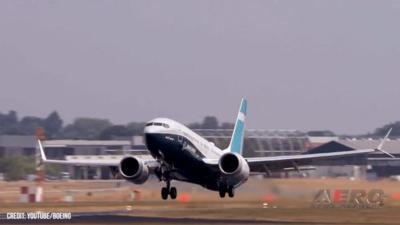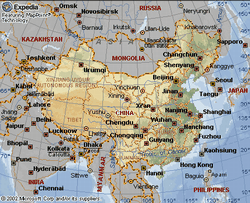On the Road Again
For the first time in nearly four years, a Boeing 737 MAX narrow-body airliner has taken to Chinese skies. The milestone event occurred on Friday, 13 January 2023 and occasioned a victory in Boeing’s protracted battle to regain its footing in the world’s second-largest aviation market.

The China Southern Airlines domestic flight departed Guangzhou at 04:45 GMT and proceeded without incident to Zhengzhou—a flight of some 745-nautical-miles.
The one-time best-selling Boeing 737 MAX-8 aircraft was ignominiously grounded worldwide in March 2019 after infamous crashes of the type in Ethiopia and Indonesia claimed 346 lives.
In late 2020, following extensive modifications to the aircraft’s design and the curriculum by which pilots are trained to fly it, the 737 MAX returned to service throughout the world—excepting China, where aviation regulators remained wary of the model.
At a 2020 news conference, Dong Zhiyi, deputy administrator of the General Administration of Civil Aviation of China, said of the 737 MAX: “Major safety concerns have not been fully resolved.” Mr. Dong went on to state that the 737 MAX would not again fly in China until Boeing’s changes to the aircraft’s design had passed approval by Chinese regulators, pilots of the type had received “effective flight training,” and the investigations of the Ethiopian and Indonesian accidents had been completed and their findings made public.

Prior to the 2019 grounding, Chinese airlines operated 97 737 MAX aircraft, with China Southern having the distinction of being Boeing’s largest Chinese customer for the model. At the time, China Southern had fifty 737-MAX jets on order, of which only 34 have been delivered to date.
In October 2022, Boeing reported it had manufactured an additional 138 737 MAX airliners for Chinese air-carriers. Subject planes sat—jammed nose to tail on airport ramps across the Seattle metropolitan area—awaiting delivery to Chinese customers forbidden by their country’s communist government from accepting them. As Beijing refused to disclose whether or not the languishing 737 MAX airplanes would be accepted in the near term, Boeing announced it would begin marketing the jets to other, more forthright air-carriers.
Analysts posit Beijing’s obstinance was attributable less to concerns over the 737 MAX’s safety and more to the fact that China's domestic aviation market had been depressed by COVID-19 lockdown measures. The veracity of that supposition is substantiated by the curious manner in which Xi Jinping’s government recently, alacritously, and contemporaneously approved the 737 MAX for flight within Chinese airspace and relaxed COVID restrictions throughout China. That Beijing is preparing for a nationwide surge in air-travel and growing demand for such is glaringly apparent.
Citigroup analyst Jason Gursky considers the MAX’s return to service with Chinese air-carriers a prelude to future aircraft sales and the first step in normalizing relations between Boeing and China.
Owing largely to the reticence with which Beijing orchestrated the 737 MAX’s return to service, Boeing has lagged woefully behind Airbus in sales and deliveries to Chinese air-carriers.

In 2022, Boeing delivered a scant eight airplanes to China while Airbus delivered more than one-hundred. To the subject of orders, Boeing, since 2017, has received virtually no calls for new aircraft from Chinese state-owned airlines, whereas Airbus has garnered nearly three-hundred new aircraft orders.
Both Western manufacturers, however, stand to face fierce competition from the Chinese-made COMAC (Commercial Aircraft Corporation of China) C919 narrow-body airliner certified in late 2022. To date, COMAC has logged more than 1,200 orders for its debut jet and the company aims to expand annual production capacity to 150 aircraft over the next five years. Boeing, ergo, finds itself uncomfortably and unenviably middled between Chinese animus toward the U.S. and Beijing’s predisposition to overt nepotism.
 ANN's Daily Aero-Term (05.09.24): Hold Procedure
ANN's Daily Aero-Term (05.09.24): Hold Procedure ANN's Daily Aero-Term (05.06.24): Altitude Readout
ANN's Daily Aero-Term (05.06.24): Altitude Readout ANN's Daily Aero-Linx (05.06.24)
ANN's Daily Aero-Linx (05.06.24) Airborne-NextGen 05.07.24: AI-Piloted F-16, AgEagle, 1st 2 WorldView Sats
Airborne-NextGen 05.07.24: AI-Piloted F-16, AgEagle, 1st 2 WorldView Sats Aero-News: Quote of the Day (05.07.24)
Aero-News: Quote of the Day (05.07.24)





